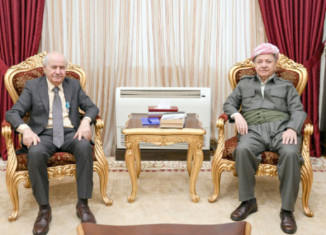7 Inspiring Women From Bolivia You Need to Know About
Their ultraconservative ideologies in part fueled the silence of some women and girls, who were sedated with an anesthetic intended for cattle and livestock and sexually assaulted by a group of men in 2009. A Mennonite teenager holding colorful fabric to sew into a dress with an old fashioned sewing machine. In the novel, https://zinmanga.club/the-ultimate-guide-to-online-dating-for-guys/ after a few men are arrested by police, the rest of the men of the colony leave for the city in order to secure their bail. While they are gone, the women gather to decide whether they should stay in the community and fight the men, leave the community, or do nothing. From historic images to vivid descriptions, a record of rich detail is bundled inside a single card. The women interviewed for the book had an idealized image of the country they were migrating to.
In the Americas, according to the Economic Commission for Latin America and the Caribbean, Bolivia has one of the highest proportions of Indigenous people. Just as their ancestors gave the skirts their own identity by mixing them with patterned blouses, local jewelry, and hats, the skateboarders modify their polleras. And even though many of them had experienced forms of violence, from physical and psychological harassment to rape, none considers themselves victims. In the portraits, the women usually look straight into the camera. No one is smiling, rather they all share a defiant look of challenge and pride.
The popular uprising was successful in overthrowing the governor and instating a self-ruling government. She helped to recruit thousands of men and women and led Indigenous troops against the Spanish, but lost her husband and four of her children in the war. She didn’t return home until 1825—the year Bolivia won its independence from Spain. Despite the praises she received during her service, the 82-year-old retired colonel died in poverty, with no military pension. These stories undoubtedly show us how women have demonstrated courage, solidarity and resilience in every era of Bolivian history.
- Part of her series Cholitas Bravas, “Cholitas Skaters” focuses on a group of Indigenous Bolivian women who wear traditional clothes while practicing extreme sports.
- While nowhere near complete, the following list offers an introductory look at the struggles of women who, far from needing a man to save them, relied on their inner power to create change.
- That is why we fulfilled the goal of sending a message from the top of Huayna Potosí, with the flag of the UNiTE campaign,” she says.
- No one is smiling, rather they all share a defiant look of challenge and pride.
Now, after having conquered seven mountains, I want to climb Mount Everest and have my polleras flutter there,” says Cecilia Llusco. She, like her companions, was born and grew up surrounded by the Andes mountains. The girls dance at Pairumani Park on the outskirts of Cochabamba. “We are all unique and our differences make the world such a rich place,” says Daniela Santiváñez.
Around the world: 16 Days of Activism
Luisa Dörr is a Brazilian photographer whose work is mainly focused on the feminine human landscape. https://latindate.org/central-american-women/bolivian-women/ The group is based in Cochabamba, but through social media it has garnered an audience well beyond Bolivia. ImillaSkate has more than 24,000 followers on Instagram, 8,000-plus followers on Facebook, and a YouTube channel where some of its videos get thousands of views. During the past three years, ImillaSkate has grown to nine skaters. Being an active member means weekly practice and shared respect for diversity and tradition. The polleras billow and twirl with every turn, jump, and occasional tumble.
Pages in category “Bolivian women”
“Habitat for Humanity®” is a registered service mark owned by Habitat for Humanity International. Habitat® is a service mark of Habitat for Humanity International. Recently, 300 women graduated from an 18-week Habitat training program that covered housing, human rights, advocacy and leadership topics. These graduates will now lead a “Women’s Network” to examine local land issues and serve as community consultants on tenure and related issues. Craig Cutler only had three chances over three days to get this image of the prototype that may someday help detect signs of life in the universe. Tacuri feels the group could push for more cultural recognition of Indigenous people.
“We’re fighting for women’s voices to be heard cause we’re women to be seen,” Mendez says. With the fight for independence in full swing, many cities and towns were left defenseless as the men charged toward the battlefield. At least that’s what José Manuel de Goyeneche—a general of the Realist forces—believed when he attacked Cochabamba. He didn’t know that an army of 300 women and children, led by the elderly Manuela de Gandarillas, was waiting for him. Gandarillas, armed with a saber and mounted on her horse, purportedly said, “If there are no men, then here we are to confront the enemy and to die for the homeland,” before clashing with the general’s men. Bolivians commemorate the courage of the “Heroines of the Coronilla” on May 27, Mother’s Day. More recently, cholas have made history by foraying into sports typically dominated by men, such as lucha libre and mountain climbing.
The word imilla means “young girl” in Aymara and Quechua, the most widely spoken Native languages. Their skirts, known as polleras, celebrate ties to their Indigenous ancestry. Skateboarders from a women’s group whose performances promote Indigenous identity ride at one of their preferred spots, a road on the outskirts of Cochabamba, https://yogomovies.in/jstor-access-check/ Bolivia. The tree-lined road is close to agricultural fields where many Indigenous people work. Overall, Madre turns images into a universal language to describe Bolivian women’s experiences and difficulties and ultimately the uncompromising strength they all possess and share. A potent sorority unites these women because as stories are told and shared, it’s soon evident that “we have all gone through this.” From the traditional Waka Thuqhuri dance, Mendez borrows another symbolic outfit where a woman wears a bull all around her body.

